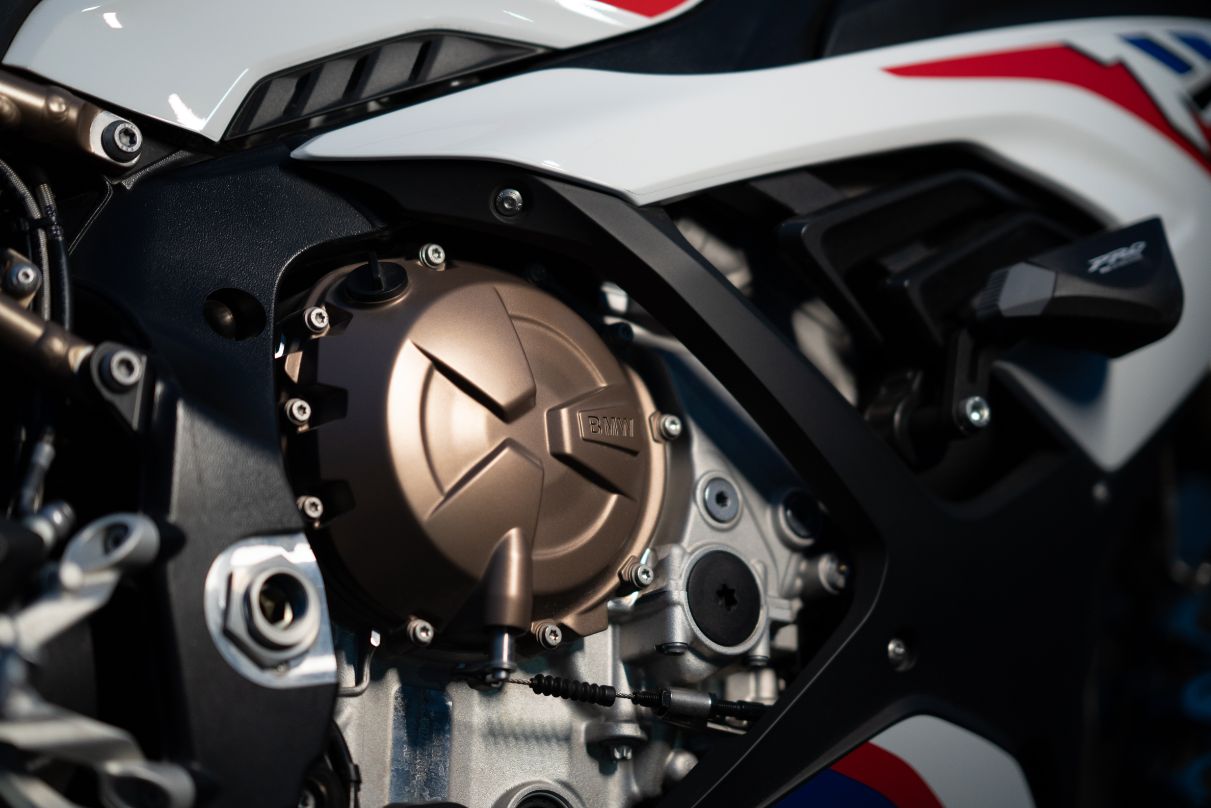Your clutch may deteriorate over time, which could make it feel stiff and notchy when you ride. This is known as clutch drag, and it can make your motorcycle feel sluggish and difficult to control. In this article, I’ll go over the simplest at-home method for bleeding a motorcycle clutch.
As opposed to a conventional cable-actuated setup, hydraulic motorcycle clutches are excellent. They feel more consistent than some cable versions, have a light pull, and don’t require any adjustments.
Restoring the hydraulic system’s pressure and resolving these problems involves bleeding or flushing the hydraulic circuit to get rid of any trapped air, condensation, or contaminants. To avoid serious motor or transmission damage, bleed your clutch circuit as soon as symptoms show up.
What is a Hydraulic Clutch?
The function of a hydraulic clutch must first be understood. Due to the reduced number of moving parts needed, hydraulic clutches were developed as an alternative to mechanically linked clutches. Slave and master cylinders are used in the hydraulic clutch’s operation.
When you depress the clutch pedal, a pushrod drives fluid through a tube into the slave cylinder, activating a slave cylinder-connected piston that disengages the clutch via a release bearing. Learn to adjust the hydraulic clutch.
Steps to Bleed a Hydraulic Motorcycle Clutch
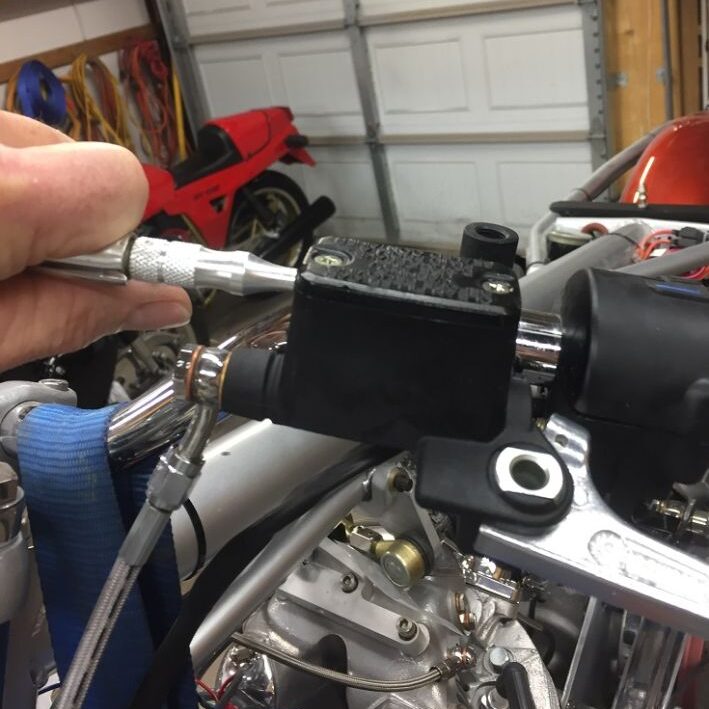
It only takes a few minutes to bleed a motorcycle clutch. Here, I’ll outline the straightforward five steps you need to follow. Wearing gloves and goggles is a good idea even though the procedure is simple and only takes a few minutes. Let’s get started.
Step 1: Items You Need
To bleed a motorcycle clutch, very few tools are required. To start, you must gather the necessary quantity of the standard clutch fluid that you intend to use. You will need a screwdriver, a clear tube, a cleaning bottle, and an 8mm wrench among other tools.
The fluid reservoir can be opened and closed using a screwdriver. To tighten and loosen the bleed nipple, use a 7mm wrench. The bleed nipple needs to have a clear tube attached to it so that any undesirable fluids can exit. You can collect these liquids easier if you use a clear bottle.
A small piece of cloth will also be required to cover the space around the fluid reservoir.
Step 2: Prepare Your Motorcycle
In order to guarantee that the system is operating at its peak efficiency, this task is best carried out while the motorcycle is still warm. Place the motorcycle so that it is level and firmly on the ground. The fluid reservoir should be securely wrapped with a piece of wood. This is so that paint or other components won’t get damaged by these clutch fluids.
The metal seal that typically covers the fluid reservoir must be opened with a screwdriver. Pull the upper plate of the diaphragm apart, take off the reservoir cap, and remove the seal. Since the reservoir is quite old, you will see a soiled, dark liquid in it.
Open the bleed nipple’s cap, and then put the clean pipe you brought here. Put the pipe’s other end inside a clean bottle. Put the wrench on the bleed nipple if at all possible. You are now prepared and ready to begin the task.
Step 3: Start Bleeding
The amount of fluid in the reservoir is typically less after bleeding the clutch. Add fresh fluid to the reservoir, then tightly secure the cap. Release the clutch lever after pushing it. After pressing the clutch lever three or four times and releasing it, press and hold it.
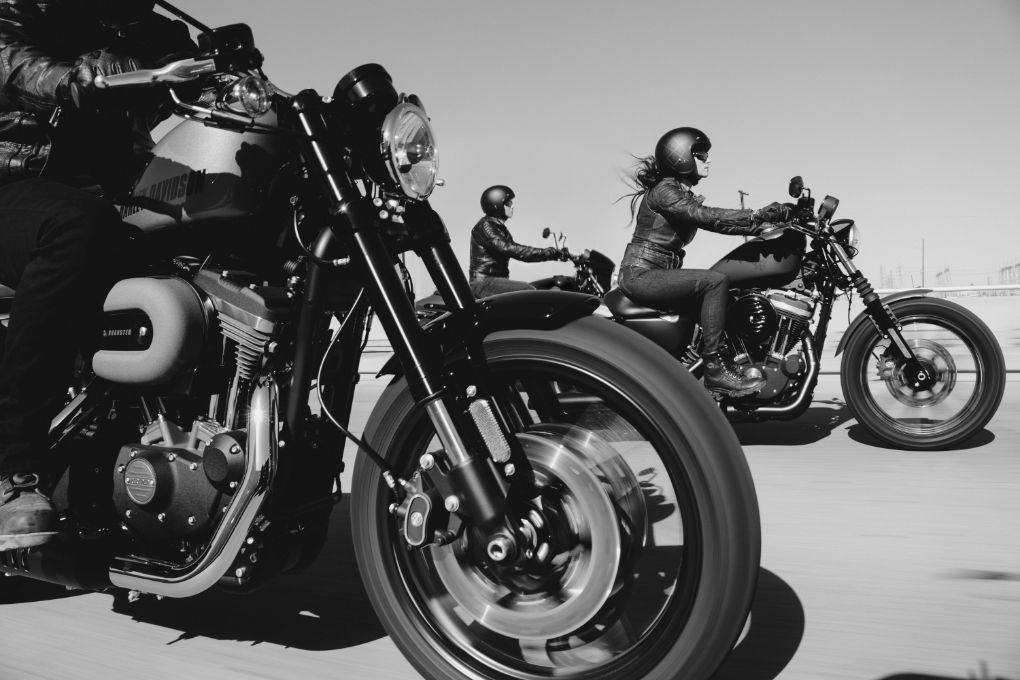
On the other hand, use the wrench that is attached to the bleed nipple to loosen it. You observe that some soiled fluid eventually escapes through the pipe. Using the wrench once more, tighten the nipple.
Once more, depress the clutch lever a few times, then release it while holding the end. After removing the contaminated fluid, tighten the nipple. Continually go through the bleeding process.
Step 4: Adding Fluid to the Reservoir
The soiled fluids will continue to leak out as long as you continue to bleed. Consistently less fluid will be added to the reservoir as time goes on. You must therefore refill the reservoir after a while.
This is a crucial issue because if the reservoir is not adequately filled, the fluids will evaporate and air will seep into the pipes. The clutch system cannot function properly because of this. Make sure the reservoir is not completely empty before bleeding.
Step 5: Get the Job Done
You will notice clear fluid dripping from the nipple’s pipe at some point after regular bleeding and fluid additions to the reservoir. You realize at this point that your work is complete.
Now open the attached pipe, screw on the cap, and tighten the bleeding nipple. After attaching the upper plate of the diaphragm, fill the reservoir with the required amount of fluid and secure the cap.
Even if you work carefully, some fluid may spill out or get added to the reservoir and get stuck in various motorcycle parts. If this happens, wash the affected areas with soap and water.
Clutch fluid enables the clutch, which is a crucial component of a motorcycle, to function flawlessly. This makes replacing it at the appropriate time crucial. A motorcycle clutch is supposed to be bled every two years, but this depends on how often it is used and how much dirt is in the fluid.
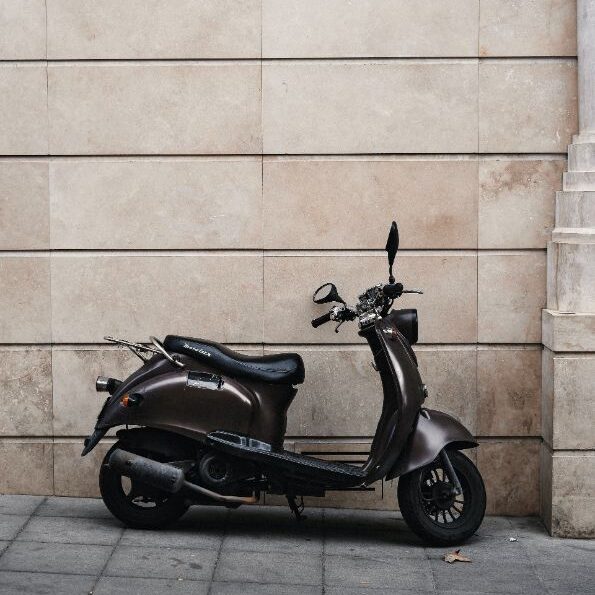
Why Do I Have to Bleed My Clutch?
By bleeding your clutch, you can get rid of any extra air by removing some of its fluid. You shouldn’t bleed your clutch unless it is giving you problems, so why would you want to? What kind of problem?
Occasionally, your clutch might be difficult to release. In other words, if you are trying to shift while the clutch is engaged, the clutch might fight you and try to stay in gear. If it does, the air in the clutch system is probably to blame.
Why is this a problem? Your clutch is a hydraulic clutch, so it operates in accordance with the system of hydraulic liquid pressure described above. The system can produce the pressure required for the clutch to operate thanks to liquid.
The system is activated by the fluid that the master cylinder forces through the slave cylinder. If there is air in the system, you don’t get enough pressure, and the clutch can’t fully engage.
When you bleed the clutch, all of the fluid in the system is removed along with any air, and only liquid is then put back in its place.
Signs That Tell You to Bleed Motorcycle Clutch
When clutch fluid is in a sealed system, it is possible for the lines carrying fluid from the reservoir to your clutch mechanism to become worn out or damaged, allowing water, dust, or other contaminants to get into the liquid.
The liquid’s ability to fulfill its purpose is compromised by this contamination. Furthermore, due to its usage, clutch fluid degrades over time.
You can determine it is time to bleed the clutch on your motorcycle by looking at some of the signs, which I will describe below.

- Regular motorcycle use will cause a small change. If you observe that your clutch lever is acting differently from how it usually does or that it feels firmer than usual, the clutch fluid may be contaminated, and you will need to bleed your motorcycle clutch.
- Pulling the clutch lever may produce an odd noise if dirt or debris has accumulated in the clutch fluid. If you notice this kind of issue, quickly bleed your motorcycle clutch.
- You might notice that your motorcycle’s clutch is malfunctioning or that the clutch system is not performing as well as it should. The reduction in clutch fluid volume or the buildup of dirt in it are the usual culprits for these issues. You must bleed the clutch if these symptoms show up.
- When checking the clutch fluid while opening the reservoir, if you smell anything foul, you know the fluid has gone bad and needs to be replaced.
Some Important Parts of the Hydraulic Clutch System
The parts of a motorcycle hydraulic clutch system are constructed to work together to allow the clutch to function. Given its importance, you should be well-versed in the motorcycle’s hydraulic clutch system. This can provide many benefits to the maintenance of a motorcycle or riding experience.
Let’s see what components are present in this system.
Clutch Lever
The link between the rider and the motorcycle’s clutch system is a fundamental component of the motorcycle class structure. Riders must engage the gear while pulling the class lever. Usually, the clutch plate begins to rotate as soon as the class lever is pulled.
Liquid Reservoir
The fluid that is carried in the clutch master cylinder is actually braked fluid, not clutch fluid. This fluid flows from the clutch master cylinder to the slave cylinder when the clutch lever is depressed. The clutch is then attached using the fluid pressure, allowing you to change gears.
Master Cylinder
Between the clutch and brake system, the master cylinder serves as a crew. These master cylinders convert a piston under hydraulic pressure from the mechanical force of lever tension.
Diaphragm Clutch
Although it has an independent operation, the diaphragm clutch can be used in hydraulic clutches. With the clutch lever, it connected diaphragm clutches. The diaphragm clutch is pushed when the rider pulls the class lever, and a second diaphragm clutch then pushes the flywheel into action.
Clutch Plate
One of the most crucial components of a hydraulic clutch system is the clutch plate, which is made from a thin metal plate. A friction lining is a part of it, and both sides of the friction lining are attached to the clutch plate. The pressure plate and the flywheel are typically where the clutch plates are located.
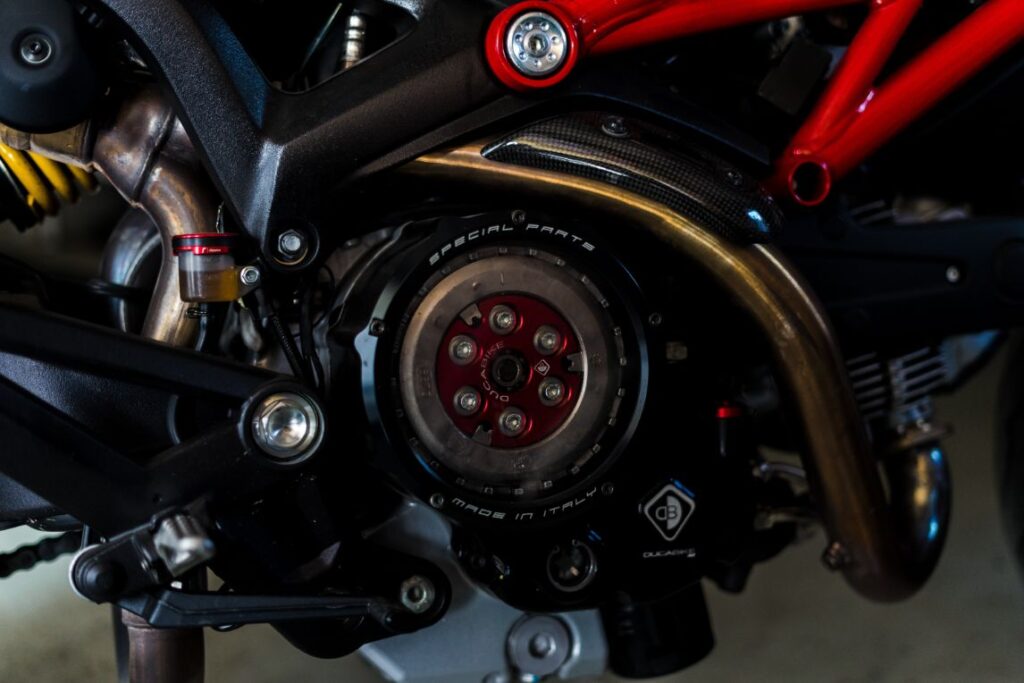
Friction Surface
On both faces of the clutch plate, the friction surface is mounted. Only when the clutch plate rotates does the friction surface connect the pressure plate and flywheel. It generates frictional force, which offers significant torque.
Pressure Plate
The pressure plate is one of the most efficient components of a hydraulic clutch. The pressure plate was fastened to the clutch pedals, springs, and bolts. The weight has a significant impact on the pressure plate’s ability to perform. When the pressure plate is weighed, it touches the clutch plate’s friction surface and causes friction.
Flywheel
The hydraulic clutch’s flywheel is another crucial component. The flywheel is positioned across from the clutch plate. It linked the shift in the transmission to the flywheel. Flywheel and clutch plate friction surfaces come into contact. As a result, friction is created.
Benefits of Hydraulic Clutch Bleeding on a Motorcycle
Replacement of the hydraulic clutch fluid is urgently required. This keeps the clutch system operating as it should. It can be extremely reckless and hazardous if the clutch is not bled in a timely manner.
After extended use, air eventually gets inside the clutch system, interfering with how well it should work. If you pull the clutch lever, it is not as effective as it should be. The case of smooth riding is affected by this. The air in the system is released during a clutch bleed, maintaining normal clutch operation.
It can be a little uncomfortable to use the clutch lever when the clutch fluids are dirty because they seem firmer than before. Bleeding the clutch fluid will quickly solve this issue.
How Does a Hydraulic Motorcycle Clutch Work?
Similar to the brakes on a modern motorcycle, a hydraulic clutch transmits the force from a lever through a piston in the master cylinder to the slave cylinder. To activate the pushrod, it forces its piston out (exactly like on your brake calipers).
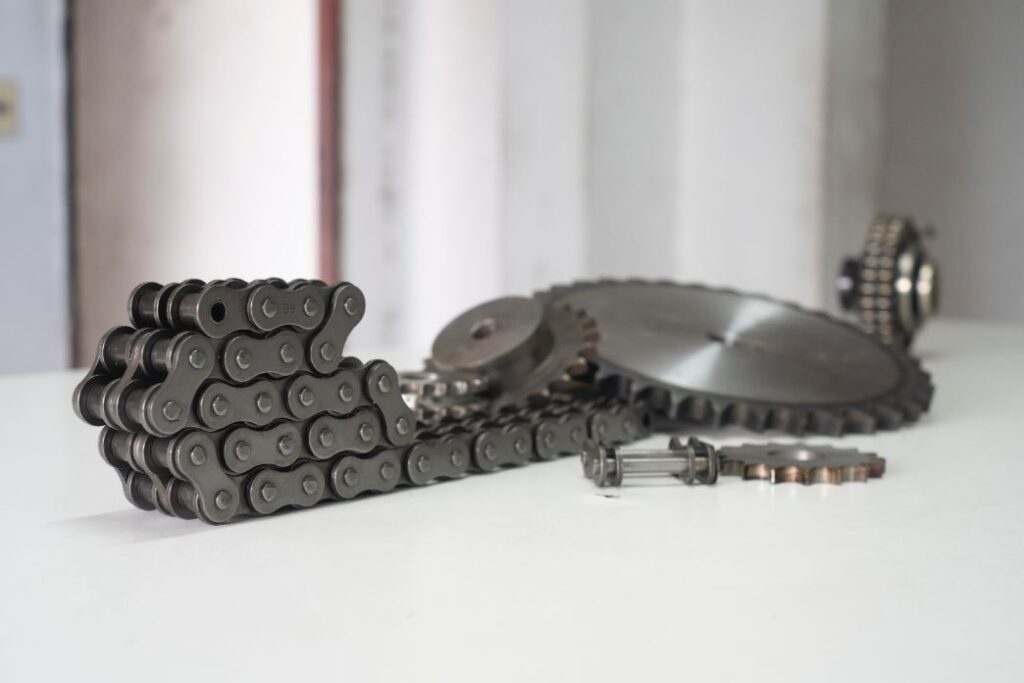
This causes the pressure plate to move, releasing the force holding the steel and fiber plates together and decoupling the transmission from the crankshaft.
You might observe that the clutch actuation feels less smooth or consistent over time. Additionally, hydraulic fluid will absorb water from the air, which will eventually cause corrosion. This could result in an air bubble getting stuck in the fluid somewhere along the line.
The fluid then turns murky or discolored as a result. Alternatively, your manual may indicate that it’s time for a refresh. In either case, we’re going to change it.
You are qualified to perform this if you have ever flushed brake fluid. The process is essentially the same.
FAQs
How Often Should You Need to Bleed Your Motorcycle Clutch?
The bleeding of the clutch on your motorcycle should be done on a regular basis, but not too frequently. A hydraulic clutch system requires clutch maintenance for a much longer period of time. Most professionals agree that bleeding your motorcycle clutch should be done every two years.
However, a lot depends on how much you use your bike and how much dirt or debris has accumulated. You might need to bleed earlier if you use the motorcycle excessively or if excessive dirt contaminates the fluid for any other reason. As a result, regularly check the clutch fluid and avoid using the clutch if not necessary.
How Long Does Motorcycle Clutch Fluid Last?
With repeated use, clutch fluids degrade over time. So, every two years, you should regularly bleach the clutch. The clutch needs to be bleached after every 30,000 miles of motorcycle travel if you want to figure mileage generally.
The need to bleed the clutch is frequently caused by the contamination of the fluid with dirt or other debris. Aside from that, any flaws in the reservoir or system could let in water or debris, which would contaminate the clutch fluid. The clutch fluids may last much less time than two years in this situation.
What Happens If the Clutch Fluid is Low?
You will experience some issues if the clutch fluid drops. This makes shifting gears very difficult at times, if not impossible. You might be willing to put up with a lot of pain, even if you’re an extremely skilled rider.
Pulling the clutch lever can only slightly move the slave cylinder due to the low fluid content, which keeps the clutch firmly attached to the flywheel. Therefore, continuing to run this way could seriously harm your gearbox. Furthermore, if you don’t take care of it, the gearbox might malfunction, which would raise the cost of your repairs.
How Much Does a Motorcycle Clutch Fluid Replacement Cost?
Motorcycle clutch fluid replacement is relatively inexpensive. You don’t need to visit a service center to replace the fluid because this process only needs a small amount of equipment and is very straightforward. Therefore, there is no need to pay a separate servicing fee.
You must use fluid that is much cheaper in price. These fluids cost only $6 to $8 per quart and are available on the market. The clutch bleeding equipment can be found in your home. Therefore, there is no need to shell out additional funds to buy any equipment.
So, if you decide to bleed the clutch yourself, all you need to do is purchase the fluid at a reasonable price to complete the task.
Conclusion: Bleed Your Hydraulic Motorcycle Clutch Now!
I went into great detail about the clutch and how to bleed a motorcycle’s hydraulic clutch in this article. I believe it will help you know a lot about hydraulic clutch systems and make your riding experience more pleasurable.
One of the most crucial components of your motorcycle that enables you to change speeds and gears and aids in controlling it is the clutch. You can easily perform the process of bleeding your clutch at home. You can now bleed your hydraulic motorcycle clutch yourself at home!
